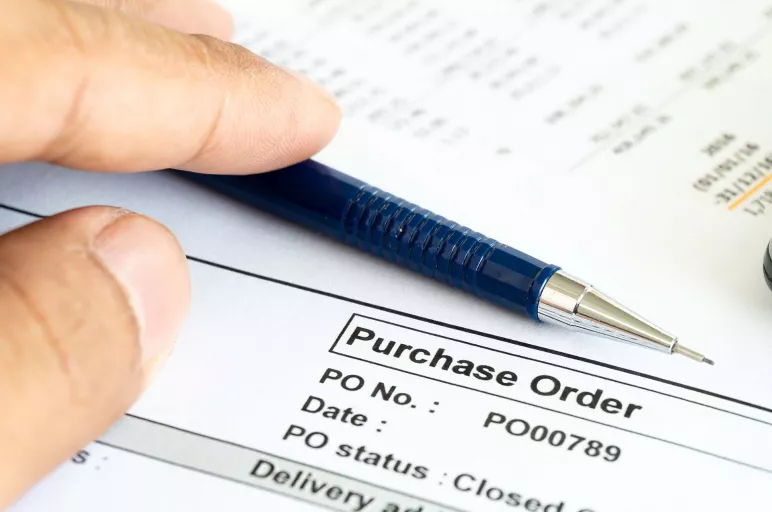
Purchase Order Numbers: The Key to Organized Procurement
- Purchase order numbers uniquely identify transactions for tracking.
- They enable verification, auditing, inventory management and spend visibility seamlessly.
- Systematic numbering ensures procurement efficiency and financial integrity.
May 08, 2024 | Procurement Strategy
A purchase order (PO) number assigns a unique identifier to the PO form.
It captures the buyer’s essential information such as contact details, quantity, product description, price, delivery date, payment terms and more.
This information forms a master document for the buyer to purchase goods or services from a seller. The purchase order number is associated with the seller for a transaction.
It is important for the buyers and sellers for purchase order tracking and accounting. The PO numbering system is required only when there is a considerable high volume of POs generated, which is the case for the majority of sellers and buyers.
Procurement and finance departments use PO tracking numbers primarily as a means for organizational and legal due diligence objectives, including the following:
Fixing prices to maintain agreed-upon terms.
- Establishing precise payment obligations
- Associating invoices with corresponding POs to reconcile discrepancies upon order fulfillment
- Facilitating inventory management and cash flow forecasting
- Preparing for future audits, as the PO number simplifies retrieval of historical purchase records
A unique PO number facilitates tracking better than a free-format order. In this way, an error such as a duplicate payment is prevented, or a filing mistake is eliminated.
Key Elements of Purchase Order Numbers
A standard PO number comprises several essential components conveying specific information. While these elements may vary across organizations, they typically include:
Prefix or Identifier:
Some businesses use a prefix or identifier at the beginning of the PO number that identifies a specific department, branch, division or account. This distinguishes multiple accounts for efficient tracking.
Sequential Number:
The sequential number is the unique identifier assigned to each purchase order, ensuring its distinctiveness and facilitating easy reference. These have a crucial role to play in giving the unique identity and to help us avoid errors and confusion in procurement.
Date:
This field denotes the date when the PO was generated. It indicates when an order is requested or approved. It can also be used to monitor order timelines.
The Benefits of Purchase Order Numbers
• Efficient Procurement Data Tracking:
A unique PO number on each purchase order facilitates effective record-keeping, enabling swift retrieval and verification of purchase order status within a database. It ensures easy access to historical transactional data, aiding tasks like auditing or reference recall.
• Streamlined Invoice Verification:
Integrating the PO number to both purchase orders and sales invoices creates a ‘three-way match ’ process before making payments. This approach reduces misapplied payments, fraud risks and improves invoice verification speed, some of the most vexing challenges for account payable teams.
Also Read: Purchase Order Management Software: Why You Need It and How to Get Started
• Transparent Inventory Management:
PO numbers enable procurement and ops teams to track goods from ordering to delivery to reconciliation of the transaction for expense optimization. It also helps in expense optimization and preventing unnecessary spending.
• Enhanced Spending Visibility:
PO numbers provide finance teams immediate visibility into the cost of operations. This enables smarter cash flow planning and historical spend analysis to identify where costs can be reduced, and suppliers can be further incentivized.
• Effective Communication with Suppliers:
PO numbers help serve as a marker for reference in any transaction, streamlining communication and dispute resolution processes with vendors. When disagreements arise, both parties can use the PO number to reference the original purchase order.
To Sum Up
It is essential to have a systematic PO numbering system.
There are several reasons for this: it enables the organization to administer their procurement operations effectively, minimizing the risk of fraud and mistakes.
A robust PO numbering system enables the organization to maintain an effective procurement information management system, facilitates the verification of invoices with purchasing orders, and ensures transparent inventory management.
PO numbering systems allow businesses to cope with complexity, effectively utilize their resources and maintain financial integrity.
Automate end-to-end order management with GEP.



